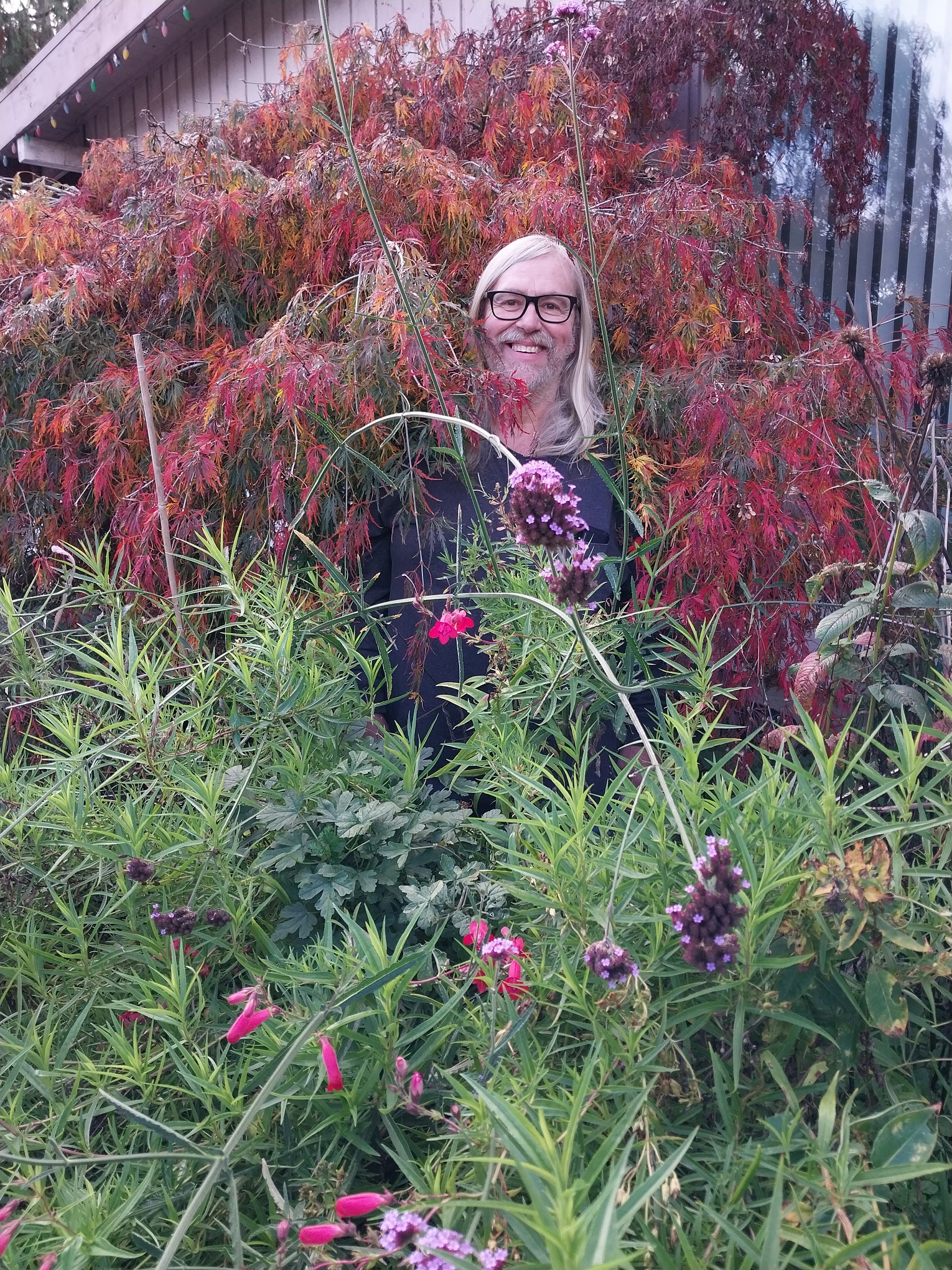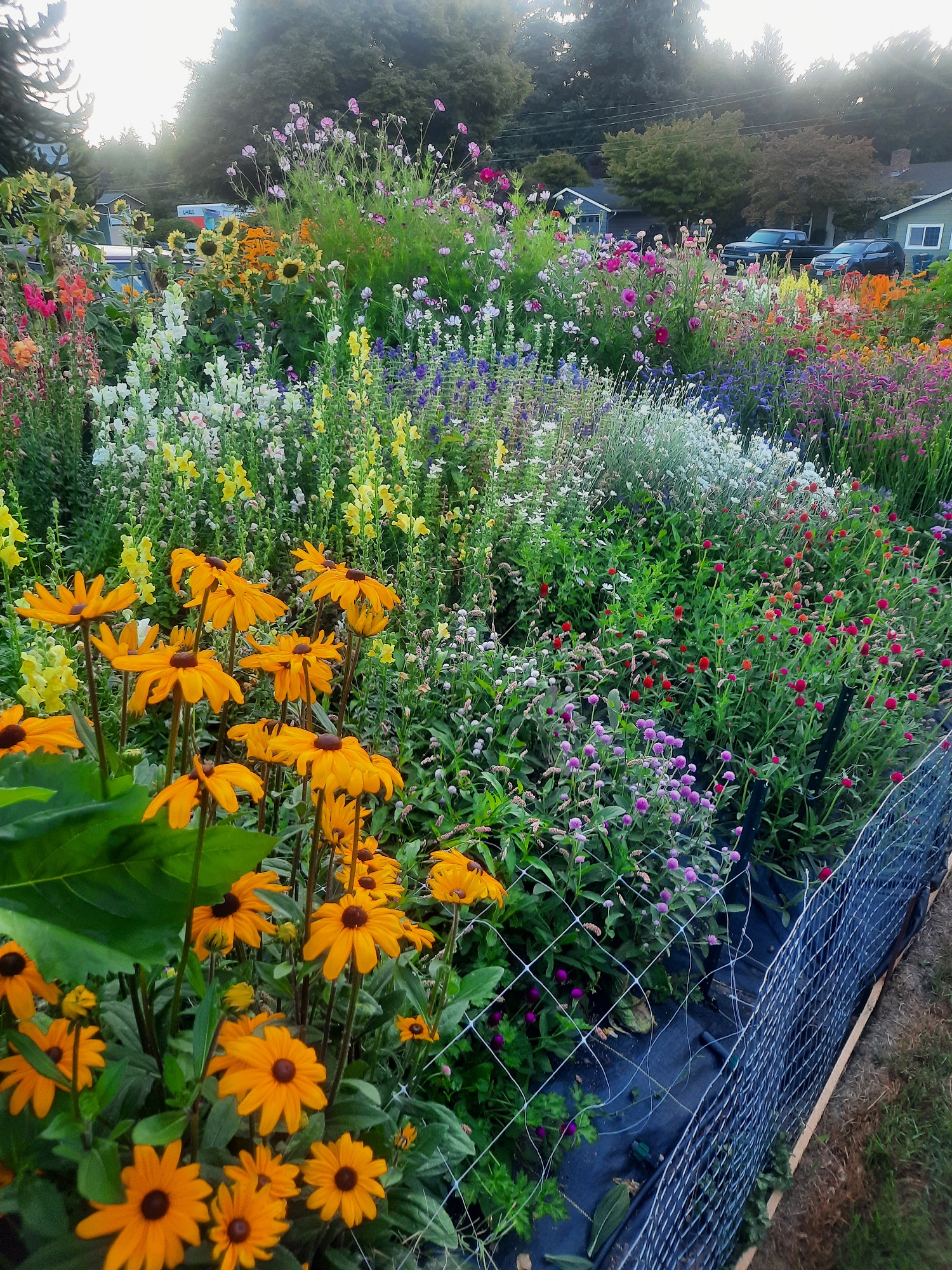
If each one of us were to compile a list of things we’ve been grateful over this past year, those lists would probably be as unique as snowflakes. But whether or not your list includes getting the kitchen repainted at last, earning an A on your final in chemistry, or hitting your first hole-in-one – my list includes none of those things this year, by the way – I hope that you’ll be able to count good neighbors among your blessings.
We really hit the jackpot here in our suburb south of Seattle. There are good folks up and down our street, and in the surrounding neighborhood – people who offer free cat-sitting when we travel, the neighbor who gave us a ride when our car conked out, the lady next door who brought over a bag of persimmons from her tree.
And this year for the first time, I had the pleasure of meeting a fellow a couple of streets over who has lived in the neighborhood for 39 years – more than a decade longer than our own family has resided here.
Scott lives in a typical, vintage-1960s tract house that’s situated on a typical corner lot that leads into a typical cul de sac. But a couple of years ago when he rototilled up his typical lawn and set about tending to what looked like an ambitious garden plot, my interest was piqued.
The first couple of years he grew typical vegetable garden crops: corn, peas, beans, carrots, cukes and different varieties of squash. But then he realized that he doesn’t really like vegetables all that much.
So this past summer? He grew flowers. Cosmos. Celosia. Globe amaranth. Gayfeather, gladiolus, marigolds – and 16 varieties of dahlias. But wait – there’s more! Rudbeckia and zinnias, statice and salvia, snapdragons and strawflowers, single stem sunflowers, branching varieties of sunflowers, and a rogue Brazilian vervain.
With the exception of the glads and dahlias, which grow from corms and tubers respectively, Scott started all the rest of his plants from seed, indoors, in February, and began transplanting his first starts outside in mid-April. He used succession planting to extend the bloom season. From mid-spring this year through the late days of October, his garden bloomed in all the colors of the rainbow. It was so glorious that it prompted me to stop by one day to meet him and thank him for his beautiful labor of love.
 Scott told me that his grandma farmed wheat in Eastern Washington, so maybe that’s where he got his green thumb. Even when he was working full-time as a mechanic, he always made time for gardening. Years ago, he learned some of the secrets of successful dahlia-growing from a former neighbor, so that’s what he started with. But now that he’s retired, Scott devotes serious time to studying up on the latest gardening techniques and watching gardening webinars. He cites the work of Erin and Chris Benzakein and their gardening documentary series “Growing Floret” as one of his chief inspirations.
Scott told me that his grandma farmed wheat in Eastern Washington, so maybe that’s where he got his green thumb. Even when he was working full-time as a mechanic, he always made time for gardening. Years ago, he learned some of the secrets of successful dahlia-growing from a former neighbor, so that’s what he started with. But now that he’s retired, Scott devotes serious time to studying up on the latest gardening techniques and watching gardening webinars. He cites the work of Erin and Chris Benzakein and their gardening documentary series “Growing Floret” as one of his chief inspirations.
Here are some of the principles Scott abides by in his garden:
He refrains from using insecticides – instead exulting in the wide variety of pollinators that come to “work” in his garden.
And instead of relying on chemical solutions to kill weeds, he uses black plastic to cover the dirt for a period of time in order to discourage weed germination.
He uses targeted drip irrigation to conserve water.
And soil health is key – he enriches his plot with compost and is looking into the no-till concept for next year.
This year has produced Scott’s most satisfying harvest, for not only has he taken deep pleasure in the aesthetic results of his flower gardening, the blooms were so profuse that he started a cottage business selling bunches of flowers fresh-cut from the garden. He sold flowers for birthdays, graduations, gravestone remembrances, and just-because.
 Scott says he’s met more people from around the neighborhood over this past growing season than he’s met in all of the other 38 years that he’s lived here. Now folks stop as they’re walking by to chat with him about the garden’s progress or comment on the weather. The UPS truck driver waves when he goes past. These are simple acts of connection, but they add up to something meaningful.
Scott says he’s met more people from around the neighborhood over this past growing season than he’s met in all of the other 38 years that he’s lived here. Now folks stop as they’re walking by to chat with him about the garden’s progress or comment on the weather. The UPS truck driver waves when he goes past. These are simple acts of connection, but they add up to something meaningful.
It turns out that Scott grew not only flowers this year, he also helped grow a more congenial community.
And for both of those beautiful results, I am grateful.
Barbara Lloyd McMichael is a freelance writer living in the Pacific Northwest.









